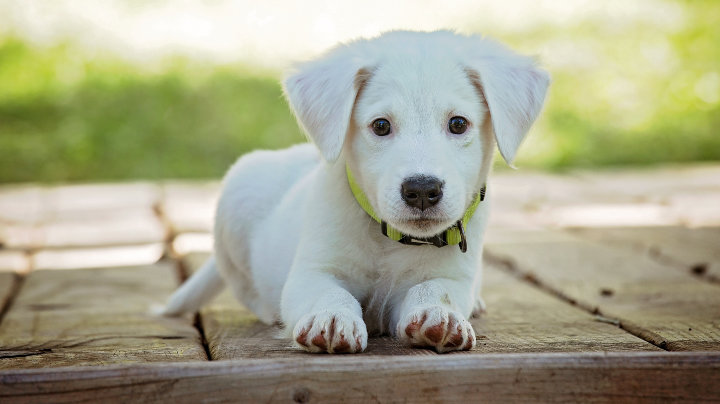Ten Tips choosing a pedigree puppy
1. Decide what breed you are looking for. Some of this will be based on what you like a dog to look like but you must take into consideration what the breed was bred for. There may be some compromise but it is better to compromise on appearance than behaviour. Even the colour of your dog may affect her behaviour and it is worth researching what breed and colour you would like before buying one. Also be aware that some breeds have show varieties as well as working lines. E.G. a show cocker tends to be more chilled out than a working cocker which can be extremely high drive. The working lines of any breed tend to be more sensitive, quicker to learn but high drive and can be very hard work as well as have a tendency to be more anxious.
2. What flooring do you have in your home? If laminate flooring then a large breed is likely to have problems with joints whereas a smaller lighter dog may not be at quite so much risk. Or it might not matter if you are prepared to put some non slip flooring down.
3. How much grooming do you want to do? Can you afford a professional groomer? Short coats are less maintenance but longer coats require a lot of care.
4. If you choose a breeder who is breeding from Kennel Club registered dogs you will be able to find out more information. The Kennel Club has a database called Mate Select which will enable you to find out how interbred the offspring will be. All you need is a Kennel Club number for your puppy or both the parents.
5. The Kennel Club has a list of suggested health tests that your chosen breed should have so that you can be sure to avoid common medical problems in your chosen breed of dog. When you talk to breeders make sure that they are able to prove that they have performed the suggested tests on their breeding dogs. If your breeder says they are health tested they should be able to show you the proof of this. Please see The Kennel Club link http://www.thekennelclub.org.uk/health/health-information-and-resources/
6. Talk to a number of breeders so that you can get an idea of how comfortable you feel with the one you eventually choose to have a puppy from. Go to breed shows so you can find out about responsible breeders, ask about temperament etc. TAKE YOUR TIME. I waited six months until I found the right breeder.
7. You need to make sure that the puppies are reared in the home for the whole period. Check carefully to make sure you are happy these puppies have been reared indoors. There should be evidence, e.g. a clean penned area, newspaper , toys etc. Outdoor reared puppies can be very difficult and often nervous of handling. Studies have shown that outdoor reared puppies are less emotionally stable than indoor reared ones which have been accustomed to be handled from the day they are born.
8. Make sure you see the mother at the very least. Try to see the father as well. If you are told the mother died then get evidence of this from their vet. If you are not able to see the mother there is a good reason for this, she would put you off buying the puppies. Pups will learn from mum and carry her genes. Genes affect temperament. Or it might be that the pups were not bred there and this person is acting for a puppy farmer and pretending to have a home reared litter. These pups would have been outdoor reared and would be likely to have no health tests.
9. Ask your breeder how much they have been socialising the puppies. For example, how many people have come around to see them, have they met children, what did the children do with the puppies? For example, if children roughly handle puppies they can become very worried about being handled, so carefully supervised social encounters are important. Some breeders will expose puppies to sound effects CDs so that they get accustomed to the sound of fireworks and gunshots etc very early on. Some breeders will expose the puppies to different surfaces, kitchen noises etc. This is so important.
10. You should be taking your puppy home no later than aged 8 weeks. After this you will very quickly be losing very important early socialisation opportunities. If for any reason you can’t collect your puppy until later ask your breeder to ensure that they vaccinate your puppy and take them to puppy classes so that some socialisation and training is taking place before you collect, even if this means you have to pay for it.
Ten Tips on Choosing a puppy from the litter.
1. Try and see the litter from four weeks of age. It is best to visit several times if you can and make observations each time to make sure that the picture remains similar.
2. Stand back and watch the puppies when you go in. Don’t approach any, just observe. Watch the mother with the puppies. Is she happy for you to look at them? If not, she may be guarding them and this behaviour could be inherited by the puppies and/or learned from the mother. If the mother is not there, ask why not. There should be no reason that the mother would not be with her puppies unless she is ill, and then you will want proof of this.
3. Watch the puppies interact with any toys they have. Are they playing nicely or are they showing any signs of aggression over toys to each other or with you? What happens if you approach the pup which has a toy? Do they want you to play or do they take the toy and move away from you?
4. Watch the puppies feed. Are they being fed in separate bowls or communal bowls? Ideally they should be fed separately or in small groups so that they get enough food and this would reduce the need to fight for food. Communal feeding may relate to food guarding behaviours in dogs.
5. Which puppies approach you? Are there any that hold back and don’t engage with you? If not engaging with you at this stage these puppies are likely to not be as social as we would want. This puppy is unlikely to be comfortable in a busy family home with lots of children but may be fine with an adult home.
6. Does the puppy become excessively bitey with you and show very pushy behaviour; is she climbing over you and behaving in a demanding way? Is she like this every time you see her? If so, this pup is for someone who will put in a lot of time training and educating her. She is probably an extremely bright puppy who will want to be involved in lots of activities. Be sure you can manage this puppy. Probably not suitable for young families. But ideal for an experienced dog owner who wants to involve their dog in a sport.
7. How does the puppy behave when picked up? Is the body language soft, loose and relaxed or does the puppy struggle or become very stiff when you pick her up? Some puppies are not keen on being handled. Whilst they can be taught to be more comfortable being handled this pup would probably be unsuitable for a young family. Children like to cuddle dogs and this puppy may object to close handling by children at some point. This pup would be better off in a home where time and patience will be taken to teach the puppy that being handled is lovely. This can be really difficult with a young family as children naturally want to love their dogs and may push the puppy too far too soon.
8. Does this puppy seek conflict with the other puppies? If so this could be quite a domineering puppy and may be hard work to manage. This pup will also need a good education with a wide variety of other puppies and dogs so that she can be educated how to behave with good manners. Otherwise this dog could be involved in spats with other dogs.
9. Where are the puppies toileting? If there is evidence of toileting on carpets you can be sure the puppy is learning to prefer to toilet on carpets as their preference for toileting surfaces is learned at a very early age. The breeders should be keeping the nest clean and puppies should not be toileting in their cage or else this will become a problem with house training later. Dogs naturally don’t want to foul their beds but if they are shut in cages too long then they will have to and then they will continue with this when they come to live with you.
10. How many litters does the breeder have and are there other breeds available. Personally this puts me off as I would question that the breeder has sufficient understanding of more than one breed to be doing a great job. Do all the puppies look to be the same age? If not this may mean that there is a mixed litters












